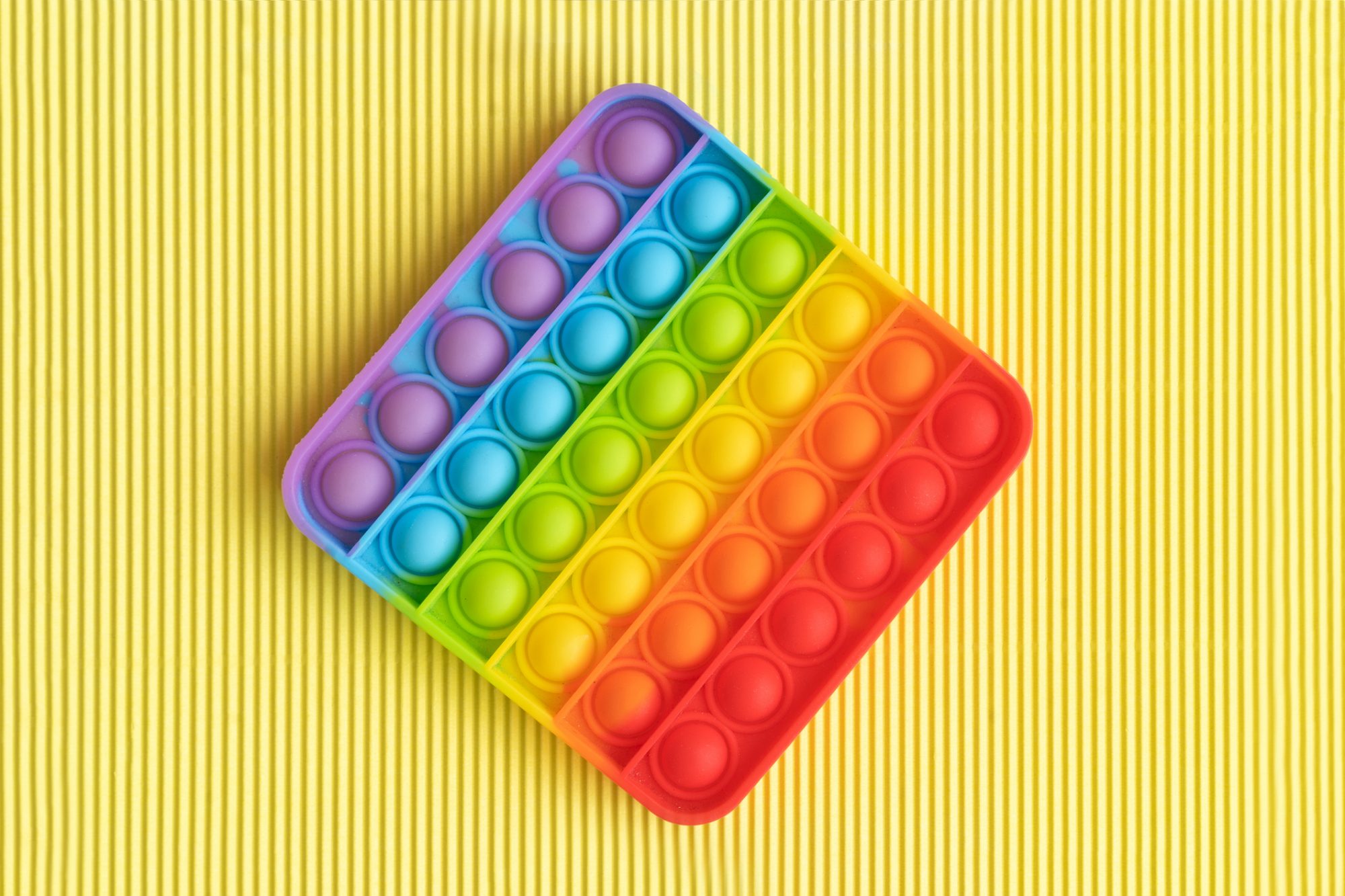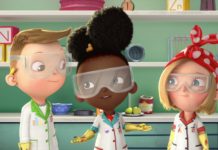
Forget L.O.L. Dolls and Baby Yoda (aka The Child). The latest toy craze is here, making waves in households across the country, and it's basically glorified bubble wrap. Featured recently in The New York Times, Pop Its have enthralled kids everywhere with their satisfying poppable blisters. Here's what you need to know about these flexible silicone toys and how they might benefit kids.
Where Pop It Fidget Toys Originated
The story of Pop It begins with Theo and Ora Coster, a married couple from Israel. Over the years, they invented more than 190 games—including face recognition game Guess Who?—and founded a company called Theora Design, according to the BBC. (Amazing fact: Theo was actually a classmate of Anne Frank.)
When Ora's sister died from breast cancer in the mid-1970s, she had a dream about a field of breasts. "Imagine a field of breasts, that you can press from one side, and then press from the other side," Boaz Coster, her son and co-C.E.O. of Theora Design, said when describing his mother's vision. Theo created a prototype, and it sat around for many years until the couple's sons sold it to Montreal-based games company FoxMind.
FoxMind manufactured the product in silicone, and it was marketed as a game called Last One Lost, a puzzle in which two players press the bubbles together, and the player who presses the last one loses. It debuted in 2013 and wasn't exactly a smash, but in 2019, it relaunched under the name Pop It! and hit Target shelves.
How Pop It Fidget Toys Took Off
The toy's big moment has been linked to its appearance in a viral TikTok video. In the clip, a capuchin monkey-turned-influencer with almost 8 million followers named Gaitlyn Rae can be seen playing with a Pop It. The monkey's owner, Jessica Lacher, told the BBC: "Somebody sent her a pop-it for her birthday. … That was the first we had ever seen of them."
Gaitlyn's video launched a craze. You can now get Pop It-style knockoff toys—not licensed by FoxMind—in a variety of shapes and colors. You can find versions inspired by Peppa Pig, dinosaurs, unicorns, pineapples, and more.
Kids have been loving Pop Its during the pandemic and while learning remotely, according to The New York Times. "Especially in these times, they can be calming, they can be soothing," Adrienne Appell, a senior vice president at The Toy Association, told the outlet. "Even adults are enjoying them."
The Benefits of Fidget Toys
Experts say that fidget toys might help kids focus, particularly if they struggle with ADHD. That's because the act of fidgeting allows the mind to be still and focus.
"I often tell parents that for their child, as for me, if the feet or fingers are still, it's a safe bet that the mind isn't," Thomas Beck, M.D., co-founder of the Winston Center for Attention, Language, & Learning tells Parents.com. "There will be more problems with focus, not less!"
But every child is different, as Yamalis Diaz, Ph.D., a clinical psychologist and a clinical assistant professor at New York University Grossman School of Medicine, explained to The New York Times. She has treated two children with the same diagnosis, both of whom chose a Rubik's Cube as a fidget toy, and although one child could keep answering questions while he played with the toy, the other was entirely consumed by it and couldn't multitask.
Still, whether they're using them as fidget toys or trading them with friends, it sounds like kids are enjoying a variety of benefits from the bubble wrap-style items. The only thing that remains to be seen is how long Pop It fidget toys will fly off shelves.





